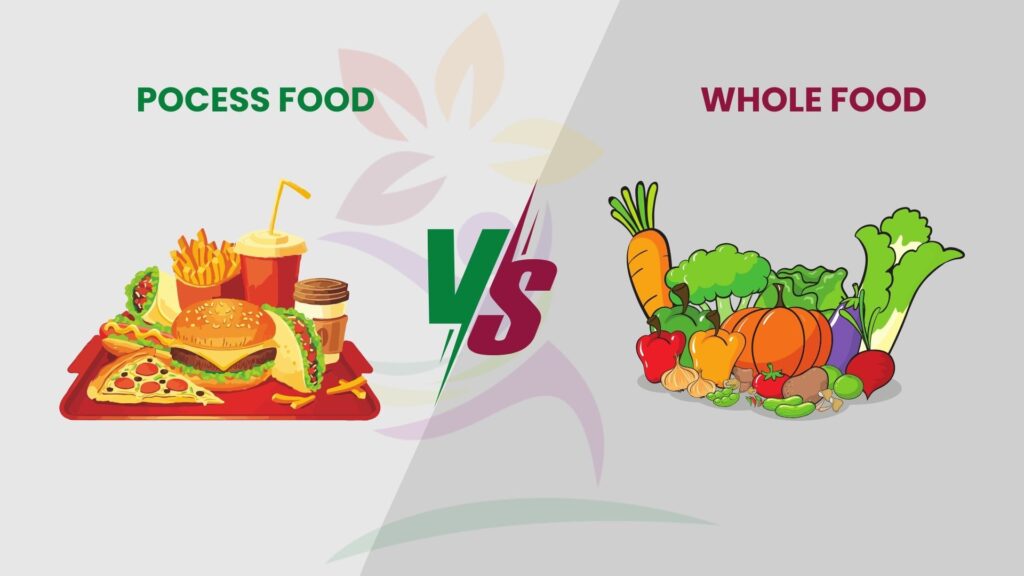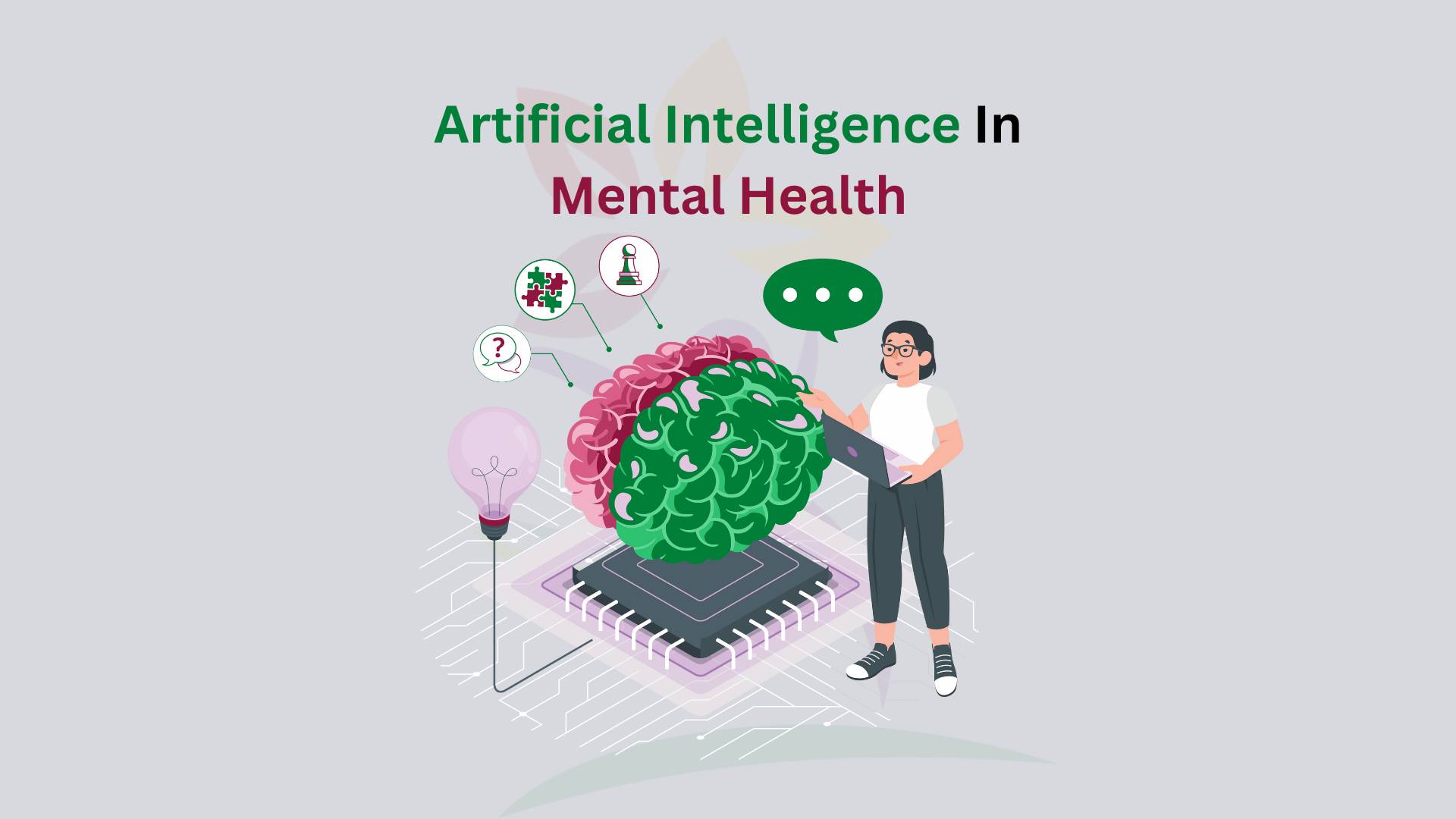All foods in the world are processed in some way. Processed Food vs Whole Food highlights the key differences between the two. Whole food is also processed, but no loss of nutrients occurs during its processing. On the other hand, undergoes a complete process by adding preservatives, artificial coloring, and tastes. Processed food is easily available, but you need to look at the right place for what you want. Whole food is time-consuming but contains nutrients, is less sugared and salted, and has fewer calories.
Quick Links
TogglePrefer whole food over processed food to maintain a healthy life because whole food gives you a feeling of fullness, while processed food causes overeating.
Whole Food
Whole food is in its original forms such as wheat grains, fresh vegetables, fresh milk, fish, beef, meat, chicken, beans, and eggs.
Minimally processing these foods makes them eatable while retaining their original nutrients and minerals. Below are some examples of whole foods:
1- Fruits and Vegetables:
Fruits and vegetables include apples, oranges, carrots, mangoes, spinach, potato, pumpkin, etc. They are a mixture of vitamins, dietary fiber, minerals, and antioxidants.
2- Legumes:
Legumes include lentils, peas, broad beans, dried chickpeas, soybeans, beans (lima, common), and Peanuts. These are the great source of proteins and carbohydrates.
3- Whole grains:
Whole grains such as brown rice, whole wheat, whole grain rye, bulger wheat, millet, whole barley, and quinoa are great sources of carbohydrates, fiber, and minerals.
4- Nuts and seeds:
Nuts and seeds are rich in fats, fiber, vitamins E, and proteins. This group includes almonds, flaxseeds, pistachios, cashew nuts, chia seeds, fenugreek seeds, sesame seeds, sunflower seeds, and walnuts.
5- Dairy products:
Milk, butter, cheese, plain yogurt, whey products etc are included in dairy products. They are rich in protein, vitamins B &D, and calcium.
6- Herbs and spices:
Cinnamon, turmeric, cayenne pepper, ginger, garlic, etc included in this group used in our daily food. They highly add aroma and flavor to food using antioxidants.
Processed Food
Any transformation you apply to food means processing it: Grinding, cooking, distillation, fermentation, homogenization, adding preservatives, aging, etc. Some foods have gone through more processing than others.
When people refer to “processed foods,” they usually mean stuff that comes in a box, has lots of preservatives, or has been refined. Some examples are:
1- Packaged items:
Most bakery items like bread, buns, juices, and canned vegetables and fruits come in packaging with added preservatives to keep them fresh for an extended time.
2- Processed Meat products:
Some amendments in the original item to prepare products like frozen meat items (chicken nuggets, kabab) and then freeze them for months for later use.
Extra processed meat includes hotdogs, bacon, sausage, jerky, and other meat products that change their shape and taste. They use preservatives, artificial flavors, and other additives to make them edible after a long time.
3- Microwave meals:
Heat-ready meals such as frozen dinners, soups, pasta, vegetables, and even desserts in the microwave before eating. These are easy meals for people with busy daily routines.
4- Baked items:
Bakers add yeast, artificial coloring, and other additives to make cakes, pizzas, burgers, pastries, bread, buns, and other fast food items tasty.
5- Refined oils:
Refined oils such as canola oils, sunflower oils, soya bean oils, corn oils, coconut oils, etc. They process them highly at the industrial level and use them for cooking food and other culinary applications.
6- Condiments:
Condiments include pickles, powdered spices, vinegar, sauces (ketchup, mayonnaise), sweeteners (maple syrup, jam), dips and spreads ( humus, salsa), etc used to enhance the flavor and aroma of food.
7- Cereals:
Manufacturers process breakfast sweet cereals like Nestle Cerelac, cornflakes, and Sunridge Choco Puffs with preservatives, artificial flavors, and aromas.
8- Dairy products:
Highly processed foods include sweet cheese, packaged milk boxes (processed at very high temperatures), ice creams, sweet yogurt, and flavored milkshakes.
9- Sugary beverages:
Soda (carbonated soft drinks),fruit-flavored drinks (lemonade, and flavored water), sweetened iced teas, and coffees. It also includes energy drinks (Red Bull), sports drinks(Gatorade), sweetened fruit juices, and sweetened dairy beverages(chocolate milk) that include high quantities of sugars artificial flavors, and preservatives.
Whole Food Vs Processed Food (Pros & Cons)
Whole Food
| Pros | Cons |
|---|---|
| Low sugar and salt: Helps control blood sugar, blood pressure, and cholesterol, reducing health risks. | Costly: Often more expensive and less accessible in urban areas, challenging for low-income families. |
| Easily digestible: Rich in fiber, supports digestion and gut health. | Time-consuming: Requires preparation, cooking, and cleaning, making it less convenient. |
| Feeling of fullness: Provides lasting satiety, and prevents overeating. | Small time frame: Short shelf life; must be consumed quickly to avoid spoilage. |
| Feeling of fullness: Provides lasting satiety, prevents overeating. | Limited access: More available in rural areas; harder to find in cities. |
| Minimally processed: Retains nutrients and natural taste without additives. | High risk of wastage: Spoils quickly without proper storage, leading to potential food waste. |
processed food
| Pros | Cons |
| Increased shelf life: Longer storage reduces wastage and aids the food processing sector. | Nutrient loss: Processing strips away vitamins, fiber, and other nutrients, potentially leading to overeating. |
| Convenience: Requires no preparation and is ready-to-eat, often shelf-stable and pre-packaged. | High in unhealthy additives: Excessive sugar, sodium, and unhealthy fats can increase health risks. |
| Affordability: Generally cheaper and widely available. | Potential health risks: Increased risk of obesity, heart disease, and diabetes; digestive issues from high intake. |
| Diversity of flavors and textures: Artificial flavors and varied textures appeal to picky eaters. | Reduced taste and texture: Original taste or flavor may be diminished, leading to bland or artificial-tasting food. |
| Fortification: Some are enriched with added vitamins and minerals. |
Is processed food higher in demand than whole-food
Nowadays processed food is in high demand because it is convenient, online available, and requires less preparation time which attracts people with busy lifestyles.
Excessive marketing and advertisement through digital media like Instagram, websites, etc produce cravings in young generations.
Affordability also plays a role because people often perceive processed foods as budget-friendly compared to whole foods, especially for those on tight budgets.
Additionally, the palatability of processed foods, enhanced by added sugars, fats, and artificial flavors, contributes to their appeal and overconsumption.
However, there is also a growing awareness of the health implications of consuming a portion of food high in processed foods. This leads to an increasing demand for whole foods among health-conscious people.
Overall, while processed foods may currently dominate the market. There is a shifting trend towards a greater emphasis on whole foods and healthier eating habits.
Conclusion
When discussing the benefits of Whole Food vs Processed Food, whole foods provide various health advantages, being nutrient-dense and satisfying. However, they also have some drawbacks, including longer preparation time, limited availability, and higher costs.
Processed food is easily available, and has a variety of flavors. It is cheaper than whole food but high intake can brutally affect your body’s activities and health.
This is not an exhaustive list, and moderation is key. Enjoy processed foods occasionally, but prioritize natural whole foods for a healthy diet.
Frequently Ask Questions
This is not an exhaustive list, and moderation is key. Enjoying processed foods occasionally is fine, but prioritizing natural whole foods is essential for a healthy diet.
Sugary beverages, soda (carbonated soft drinks), condiments, microwave meals, baked items.
Processed food undergoes a complete process by adding preservatives, artificial coloring, and tastes.
It is a food in its original forms such as wheat grains, fresh vegetables, milk, fish, beef, meat, and eggs.
Fruits, vegetables, meat, milk, and lentils are some examples of whole foods.











